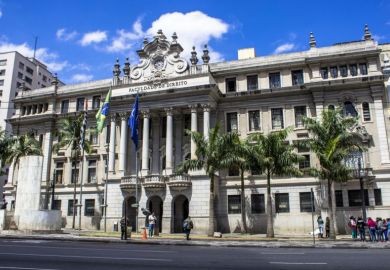
Times Higher Education has today unveiled the key characteristics of a globally recognised top 200 university, ahead of the publication of the Times Higher Education World University Rankings 2014-2015.
The quest to create “world-class” universities has become something of a global obsession in the past decade as governments across the world have put the development of competitive higher education and research systems at the heart of their national economic strategies. In Russia, for example, President Vladimir Putin has made it a key policy objective to move five Russian universities into the top 100 of the Times Higher Education World University Rankings by 2020. In Japan, President Shinzo Abe has said that there should be 10 Japanese universities in the world top 100 by 2023.
But the characteristics that distinguish a world-class university have been elusive. As Philip Altbach, the director of the Center for International Higher Education at Boston College, wrote in a much-quoted paper (“The costs and benefits of world-class universities”, which was published in 2003 in the journal International Higher Education): “Every country wants a world-class university. No country feels it can do without one. The problem is that no one knows what a world-class university is, and no one has figured out how to get one.”
Almost a decade later, Jun Li, an associate professor at the Chinese University of Hong Kong, wrote (in “World-class higher education and the emerging Chinese model of the university”, a paper published in the journal Prospects in 2012), that the very concept of a world-class university is still “ambiguous, uncertain, and contested, varying from one context to the next”.
Now, ahead of the 11th annual edition of the THE World University Rankings, to be published at 21.00 BST on 1 October 2014, Times Higher Education has shed new light on the subject, revealing the key characteristics of the average top 200 university in its World University Rankings 2014-2015. The top 200 represents the top 1 per cent of the world’s higher education institutions.
The average top 200 university:
- Has a total annual income of $751,139 per academic (compared with $606,345 for a top 400 university)
- Has a student-to-staff ratio of 11.7:1 (compared with 12.5:1 for a top 400 university)
- Hires 20 per cent of its staff from abroad (compared with 18 per cent for a top 400 university)
- Has a total research income of $229,109 per academic (compared with $168,739 for a top 400 university)
- Publishes 43 per cent of all its research papers with at least one international co-author (compared with 42 per cent at a top 400 university)
- Has a student body made up of 19 per cent international students (compared with 16 per cent at a top 400 university)
The THE rankings are compiled using data from Thomson Reuters (Thomson Reuters InCites™, 2014) and include the world’s top 400 universities, and the top 100 in each of six subject areas.
Phil Baty, editor of the THE World University Rankings, said: “Top-quality universities come in many different shapes and sizes, and there is no single model of excellence. With this in mind, the THE World University Rankings are carefully designed to capture excellence in teaching and research against a university’s own mission and its own unique profile.
“But this new information, revealed for the first time from the rankings database, provides some clear pointers for any academic leader or any government serious about building world-class universities.”
Mr Baty continued: “First, you need serious money. Significant financial resources are essential to pay the salaries required to attract and retain the leading scholars and to build the facilities needed. Second, providing an intimate and intensive teaching environment for students, where they can expect to truly engage with leading academic staff, can really help. Finally, and perhaps most importantly, a world-class university must be genuinely international. It must be a magnet for the planet’s most talented staff and students, wherever they happen to come from; it must bring people together from a range of different cultures and backgrounds to tackle shared global challenges; and it must work and think across national borders.”
Don't miss the Times Higher Education World University Rankings 2014-2015, where we will reveal the world’s top 400 universities overall and the world’s top 100 in each of six specialist subject tables.
Register to continue
Why register?
- Registration is free and only takes a moment
- Once registered, you can read 3 articles a month
- Sign up for our newsletter
Subscribe
Or subscribe for unlimited access to:
- Unlimited access to news, views, insights & reviews
- Digital editions
- Digital access to THE’s university and college rankings analysis
Already registered or a current subscriber?



